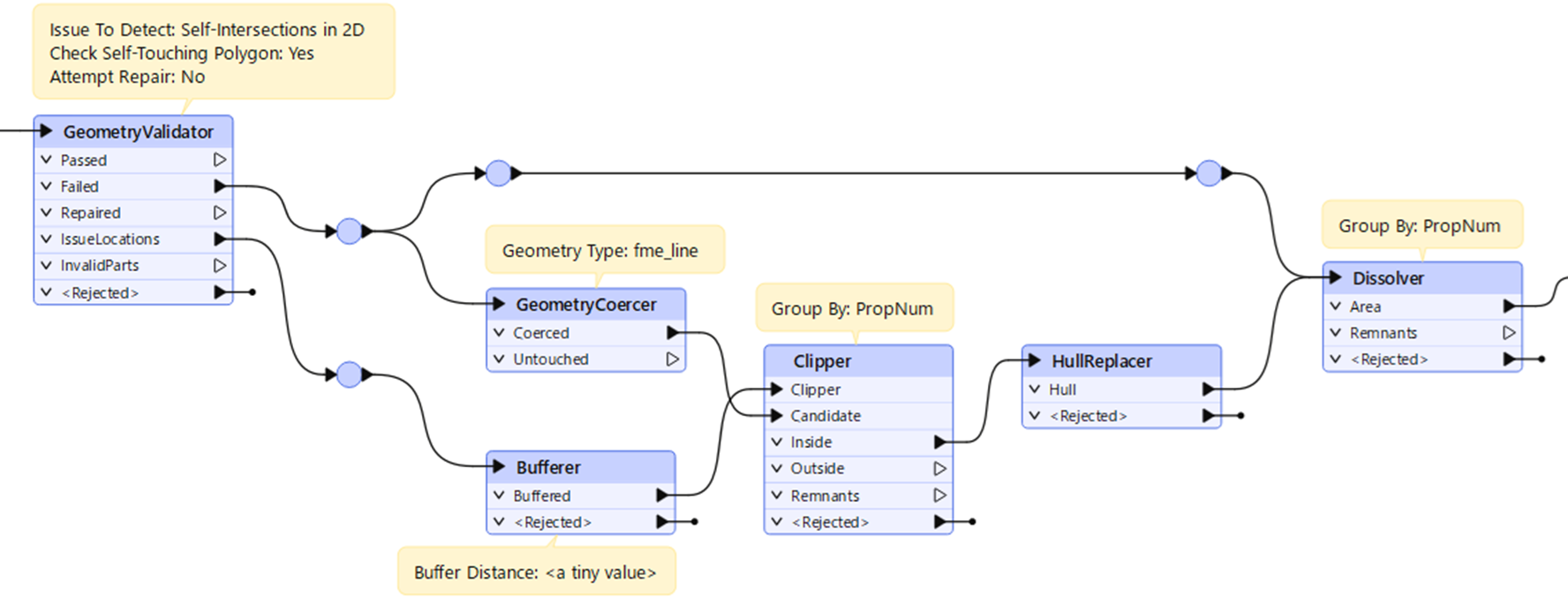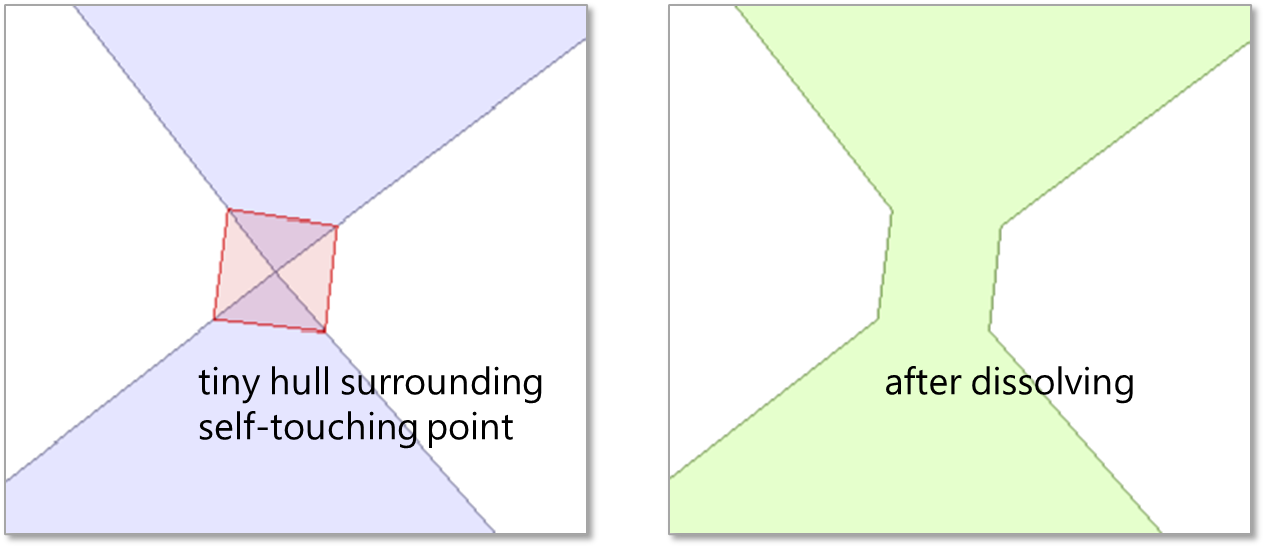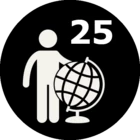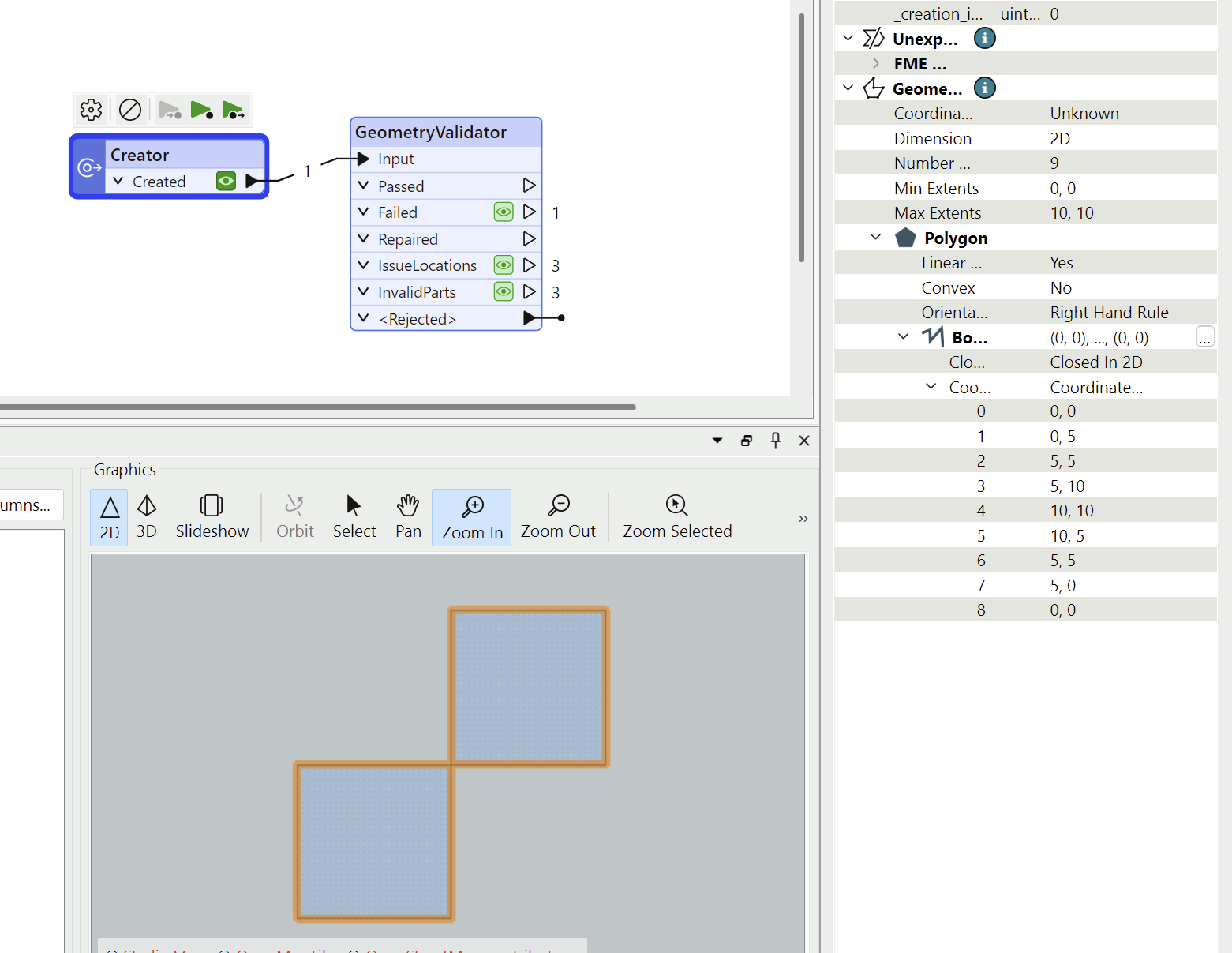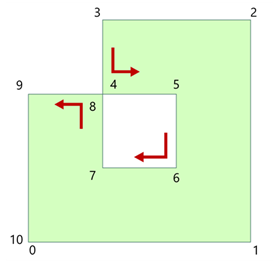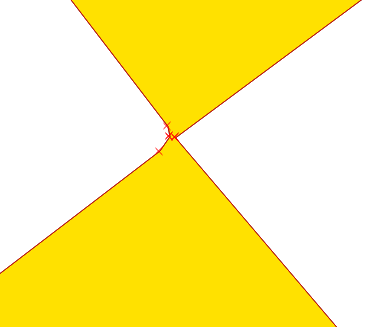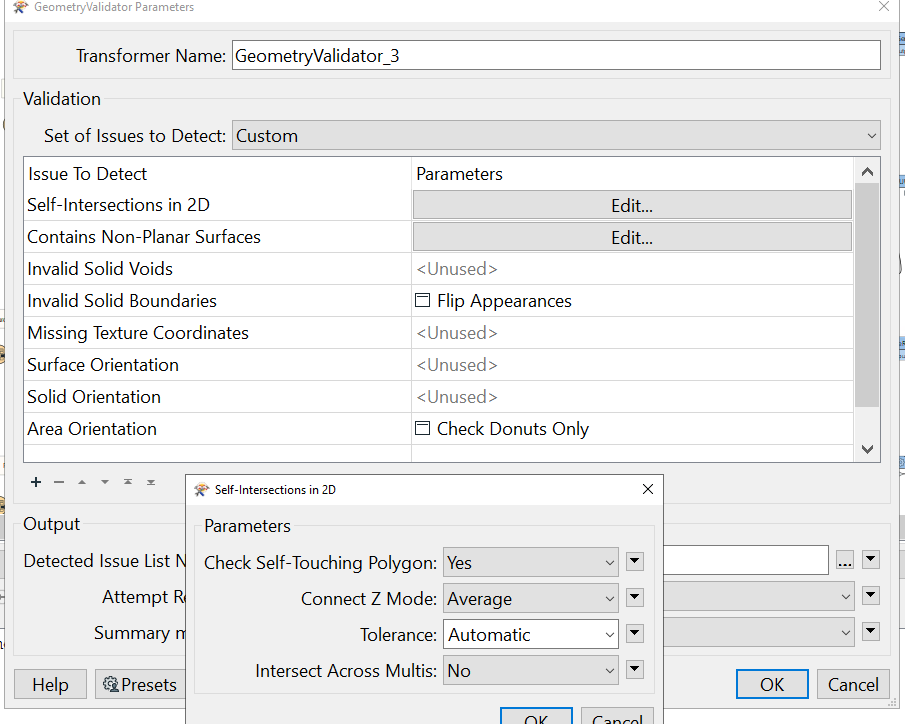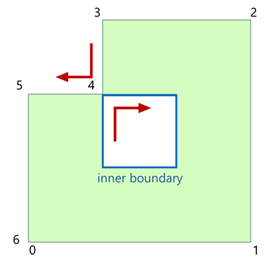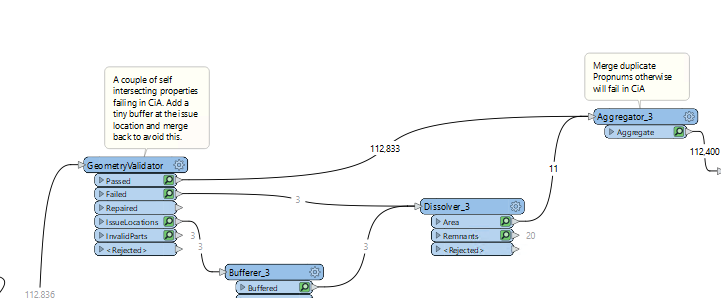I have a routine that extracts property boundaries from a web service and outputs to shp to be imported into our Property and Rating system. I do have a Geometry Validation process to repair geometries where they may self intersect or are corrupted, however there are two polygons that are not repairing, even though they pass the test. Both are like the below. The polygon doesn’t actually cross over itself. Rather, this is two separate vertices where the bottom section meets the top section, and it’s all one polygon. Is there a way to automatically fix these with FME as we can’t edit the original. My workaround is to have the tiniest buffer and dissolve so the vertices don’t touch which passes the validation test in our P&R import, but ideally we should have clean geometries.
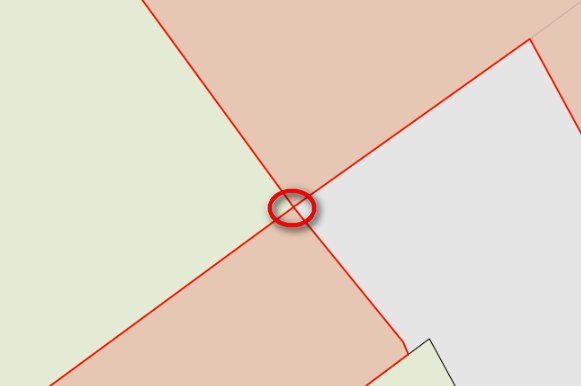
Any help appreciated.
Regards,
Josh




